I’m Christian Payne, photographer and writer. In this weekly dispatch I share a stream of consciousness as I explore the relations between things, how we share, what we share and consume, plus where we might be going.
Thanks for joining in.
#TheAction
[Warning. The following section is mostly a rant that has already taken up far too much of my time and skipping it will save a chunk of yours. My fuzzy logic is no doubt full of holes plugged with emotion but that’s my state of mind at the moment. Some things make me emotional.]
Here we go. I’ve spent more of my time this week on the foto app than I’ve spent doing email. It’s given me many pleasurable hours as I was reminded of an early Instagram, but with the eclectic community of PhotoSIG.
So I was very excited when an update arrived for the app (still in open beta) and despite it being close to midnight, I downloaded it.
Once installed I could see that you could now like peoples comments instead of having to reply with words or a thumbs up. Brilliant. Then I went to see what the new fixed tags were. Tags are used to filter your experience but also enable your work to pop up in the different feeds.
I could not believe it. On top of the page was the tag ‘AI’.
I had not for one minute considered that AI images might be posted into the app as foto was, in their words…
“At Foto, we celebrate the profound power of a photograph. We've seen how a single image can capture a moment, tell a story, and bridge divides. It's a medium that, at its best, brings us closer together, fostering empathy and understanding in a world that often feels fragmented.”
This to me doesn't mean AI generated imagery. Photography means ‘painting with light’. Can we find a philosophical parallel between conscious inspiration found in the physical world and patterns found in data?
Probably. But where is the photographer's perspective, intent, or emotional connection?
I read a bit deeper into the site.
“Foto is for anyone who wants to share photographs and images online. We are not building Foto to be a place where only photographers talk to photographers.”
Damn.
I’d got it all wrong. Mostly because all I saw were people with cameras talking to other people with cameras. And it was SO GOOD!
And at midnight, after I spouted off at foto’s Michael Howard on Twitter (yes I should have been asleep), he told me the AI tag had always been there. Doh.
Conversations with friends on Discord had shown me others had also not seen it. Possibly because love is blind. That sudden noticing of the AI tag had me panic.
My first thought was that having AI generated images alongside traditional analog and digital photography is disingenuous on a platform celebrating photography and photographic workflows. But that might not be what the platform intends to be. Just what people are currently enjoying.
Many of us have been waiting for a space like this but I felt the flow of amazing photography was in danger of being polluted. Even if people tag images so others can filter them, there will always be the niggling thought that an image does not reflect reality. That that person never existed, or that bear might not really be on a skateboard. You get my drift?
I know some people could not care less about the process or the emotional connection the photographer has with their work, but I’m cursed with being drawn to more than just superficial, surface level beauty.
In the comments on one of my images, foto said...
“We don’t like AI generated images but the issue is policing it. We are not fans of AI but it’s here already woven into Adobe products and hybrid images are being produced constantly.”
Good point. I absolutely get the need for the ‘Partial-AI’ tag for those that edit heavy or god forbid have nothing better to share than that image where they cloned an ex partner out of a selfie. But at the risk of sound even more up my own arse, there are so many other places where AI created imagery can showcase itself. Places where everyone is aware of how the images are made.
I just don’t feel that a “Black and white, moody, Leica style photo of an Middle Eastern man, standing outside a war torn house, in the style of Robert Capa --ar 4:3” should appear in a feed alongside some genuine political reportage. Some photographers, risk their lives to get an image in the hope it might share a truth or prove a crime. I spotted some great work just last night from some big name photographers. I did not for a second consider it might be fake.
foto already has a flourishing community. I’m hoping the inclusion of AI image makers won’t alienate talented individuals due to a misrepresentation of skills. For me the app has been about showcasing vision, hard work, authenticity and self expression. Lose this and in my humble opinion foto loses its unique selling point.
I was all ready to have a T-shirt printed with the foto logo on it, but as I feel now I might not now be their target user, my brand loyalty has taken a hit.
I did write to foto with a few questions: I’ve paraphrased Michael’s responses to save space in the email but will post all his words in the comments.
Q. Do you see the AI contributors as a viable part of the paying supporting community?
A. We're currently observing how users from diverse backgrounds engage with Foto. While we’re building a photography-centered social network that allows various image types, data collection and adjustments are key. I don't believe there’s a significant AI community on Foto; it appears to be a small percentage of users.
Q. Is it possible that the AI image makers might eventually outnumber traditional photographers?
A. Given the rapid integration of AI by companies like Adobe, Google, Apple, and Canva, its future remains uncertain—it's all speculative. AI images could end up being a passing trend, similar to NFTs. While the market will eventually stabilize, the reality is that AI usage is increasing, and significant investments are being made to enhance it. It's a challenging situation, but that's the current landscape.
Q. Do you plan to allow the photographs posted in the feed to be used to train AI models?
A. No, we will not use photos posted to Foto for AI training. If we ever consider it, users would need to opt in, and we would compensate contributors for their photos. While this might offer a revenue opportunity for photographers in the future, it's too early to determine.
Q. Can you protect the existing contributing photographers from having their content used in AI mashups? No answer but I doubt this is possible anywhere.
Q. How might you clearly define original work from Images generated on the databases of other people’s work?
A. We're actively discussing this and will cover it in detail on the Foto podcast about AI. While there are some current options, we need to develop a solid plan, potentially using metadata and third-party systems to identify AI images.
Q. How do you plan to maintain the authenticity and artistic integrity of the community?
A. This relates to the previous question. We aim to use metadata, third-party systems, and image labeling to empower Foto users to customize their experience. Unlike current social media, we want to offer control, but achieving accurate labeling and search will take years, if not decades, to perfect.
Q. Are you beholden to shareholders?
A. Foto is a bootstrapped platform without investors or shareholders, fully supported by our community. Our goal isn't to replace Instagram but to create a space that's more inclusive than just 'serious' photographers, yet smaller than Instagram.
I can see now some of these questions were written while I was still feeling sore. They don’t know me from Adam and I guess I’m well on the way to being labeled as public annoyance number one.
Although I think foto might underestimate how many budding photographers and hobbyists are on the platform, I like the answer to the last question. It talks of massive growth but not unsustainable.
As the feed in the app is still slow enough, I really enjoy watching the main ‘everything’ feed. The quality of photography in the app is outstanding… moving.. inspirational… But the moment I saw the AI tag I hurriedly blocked all the AI image creators as if I was fighting an infection. Even though they are most likely lovely people. I just wanted to keep the human sized teddy bears smoking bongs on skateboards from ever appearing in my wonderful photo rich feed.
I’m pretty sure that foto are right in their thoughts that filtering is key. But it’s only a three person team. With a long list of to-do’s. They can’t be doing this for the money. If so they’d probably have an easier time building an app called ‘Skepticism’ where users vote on what is real or fake to assist in the training of an ever hungry machine learning models.
In the app comments, foto said:
“This is a new problem and the solutions are not easy because of how fast things are going.”
But this isn’t the first time traditional skills might become irrelevant or undervalued. And yet the revolutionary invention of photography didn’t entirely replace painting. The impact on painting was huge but it evolved and redefined itself. Making pictures with a camera also requires vision and technical skill. And so photography is able to coexist with painting and other forms of artistic expression.
But how might we now define and value creativity when anyone can easily make an exciting or attractive image with just a few words?
Another sentence from a foto comment said…
“The problem is the conversation needs to be centred on solutions not emotional reactions to AI.”
Very true. But alongside concerns with misinformation and authorship, I feel my emotional connection to this discussion and community is justified. We are contemplating a loss of authenticity, artistic identity and the already impending devaluing of a craft/art that many people do with their heart and soul.
I feel. We feel. And at this moment in time, the machines don’t.
#ThePictures
Just in case you wondered what the image prompts above would have produced, here are THE LYING, MISLEADING, AI GENERATED IMAGES THAT ARE NOT REAL AND REQUIRED NO SKILL TO PRODUCE.
Check out the photographic work of Phil Kneen. One of the many amazing photographers I have connected with on foto.
I’ve been slowly working through all the Star Wars films with the kids. Return of the Jedi was the next in the queue and just so happened to be playing at the local cinema. We smuggled our snacks in and I was wondering what the shared experience might be like as the opening words crawled up the screen. But there was only another five people in the cinema. Apparently Star Wars episode IV and Empire pulled quite the crowd but we almost had the cinema to ourselves. Which is also good. So glad they got to see some Star Wars how I originally got to enjoy it …41 years ago.😳 Well almost originally as these cuts had a few extra special effects. I wonder if any of the originally deleted scenes might make it into future cuts.
#TheWords
I never knew Bukowski could be so tender. Thanks to Poetic Outlaws for sharing his poem Nirvana.
This issue of Ivan Pope’s Neurotivity has a handy list and explains how the NHS defines ADHD.
Should you want to read your Kindle books on other devices and not want to have them mysteriously removed, here is a handy guide on how to remove DRM (…if you are on windows. Since drafting this post the Mac option has been patched by Amazon. For now.)
#TheSound
Really enjoying the podcast ‘Question Everything’ It has journalism questioning itself and should be required listening in journalism schools.
Mum does the washing…
I listened to ‘Go’ by the Chemical Brothers while doing a kettle bell work out this week and it was surprisingly effective.
Although I could hardly walk the following two days.
This is an amazing video on how to make a legit sound camera. ←I know it’s just a boring looking link, but I learned a bunch watching this.
#TheConsumed
Every once in a while I make some space in the drinks cabinet by seeing what I can make with dregs. Not had one of these before. It tasted way better than it looked.
#TheBody
What exactly is moderate drinking?
#TheThings
Back before when IBM scraped Flickr for facial recognition software, even before Google glass was a thing, I had a talk where i’d contemplate how long it would be before we’d walk down the street and be discreetly shown the personal information of people we’d pass. It’s been possible for a long time but you rarely see as good an example of it in action as this. Make sure you check out the video.
#TheThanks
It’s the paying subscribers here that support my work and keep this email alive. Thank you! I also enjoy bouncing ideas off them in the Discord. Let me know if you need access. There’s lots of overflow stuff there if you’d lie to dig around. Please consider upgrading to become a paid supporter. If you prefer PayAsYouGo you can do that via PayPal. I also have Monzo.
Either way… Thank you for reading, sharing and liking.
#TheWeb
Here are some things to help you survive this age or misinformation.
Should you suddenly find yourself unable to walk and need to crawl into King’s college hospital in London, fear not! You can now rent a wheelchair.
Greetings Vanauthor, welcome to the Documentally community map
Fascinating long read about the extraordinary life of Simona Kossak via Artpod
Grow, grow, dominate, grow. Sometimes I wish Substack would just do Newsletters.
Some of my other places include Letterboxd, Discogs, GoodReads, Flickr, Strava, Untappd, my audio RSS feed, Swarm, Vivino, LinkedIn, YouTube, Mastodon, a ham radio newsletter or search ‘Documentally’ on Wire, Birdsite, Bluesky & for the moment foto.
New tools that can infect air gapped devices.
…copyright registration requires more human authorship than simply plugging a prompt into Midjourney.
Looks like the perfect solution for camping wine.
#TheEnd
Well done for making it this far down. Thanks for reading/skipping. This is a little late as it’s my daughter’s birthday today and much much fun has been had.
If you have any thoughts on the topics in this dispatch your comments are always welcome.
Busy week next week and Leighton Buzzard and London shall be visited at some point. Till then i’ll be in the usual places.
“Growth for the sake of growth is the ideology of the cancer cell.” – Edward Abbey
Feel.
See you out there.
Over…



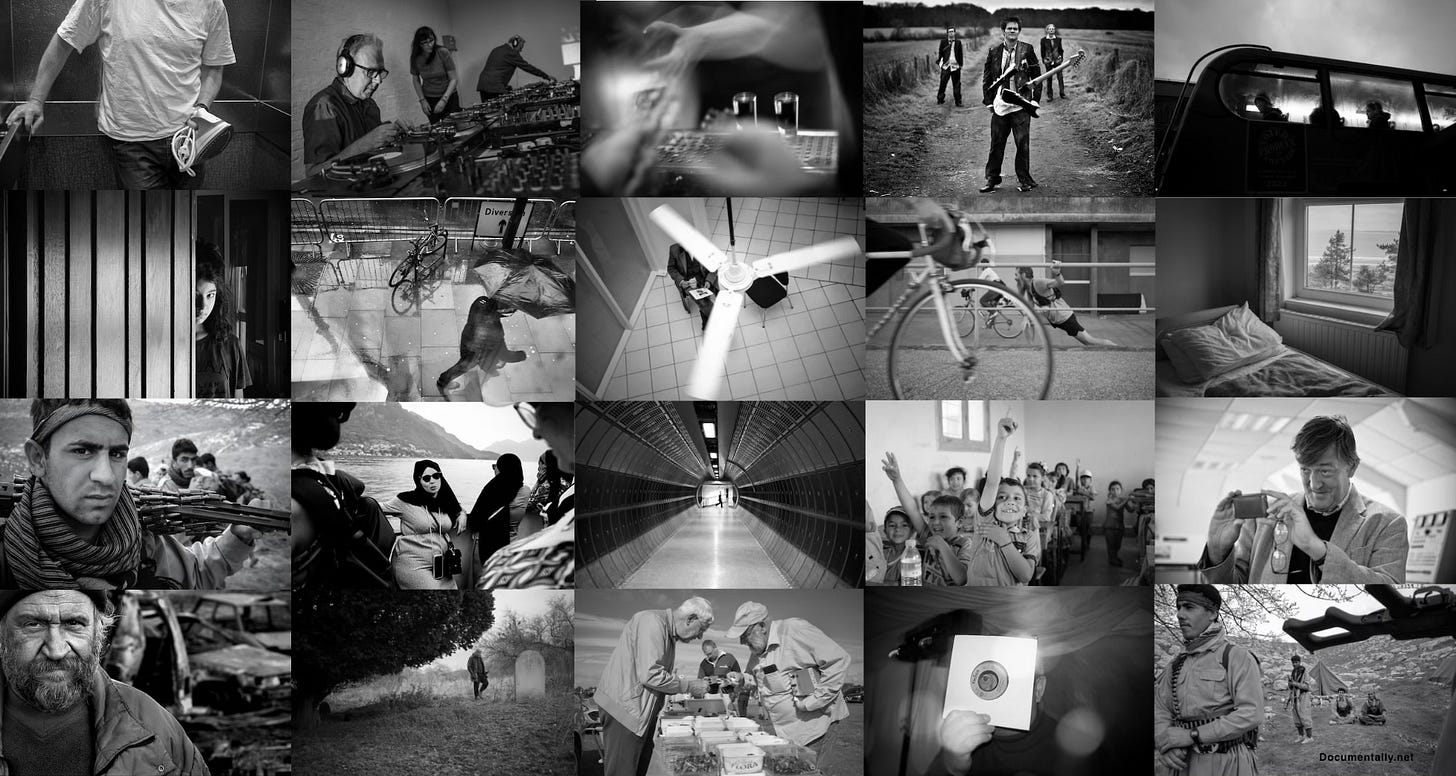

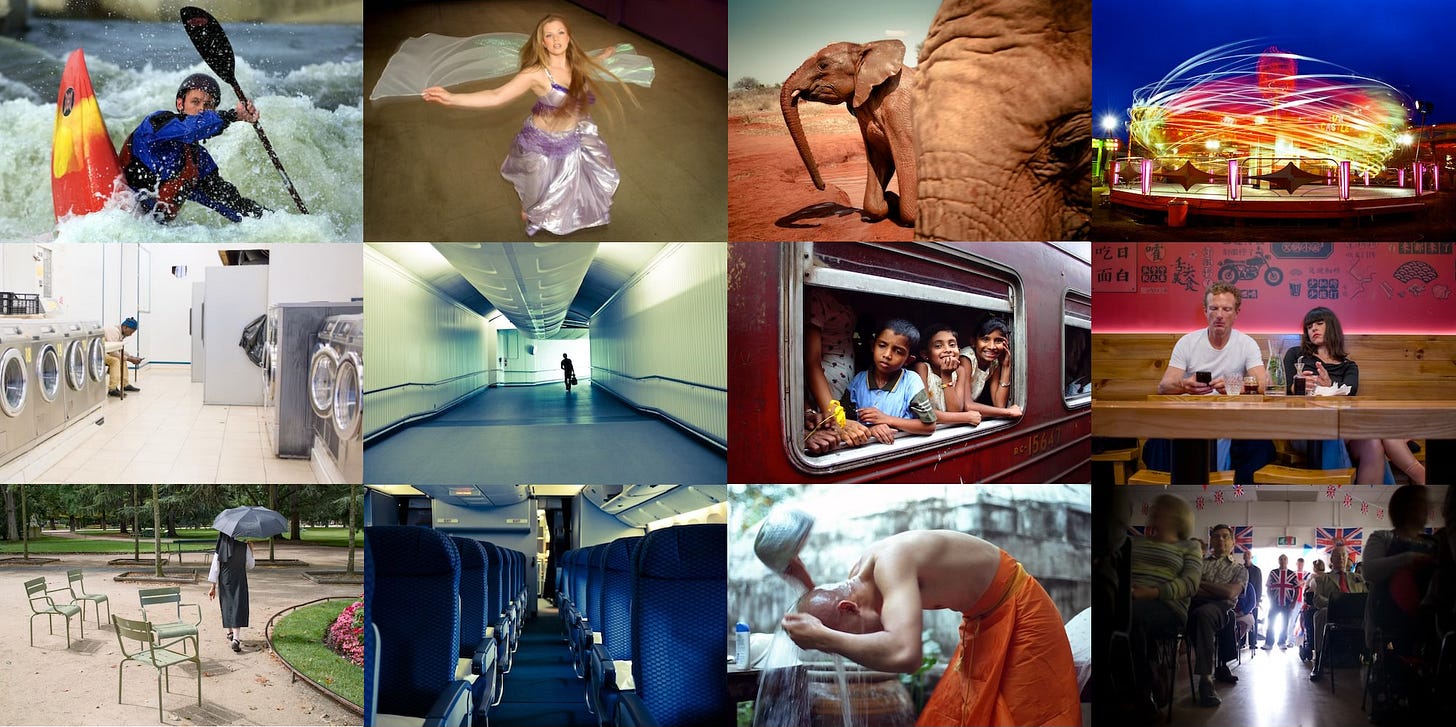
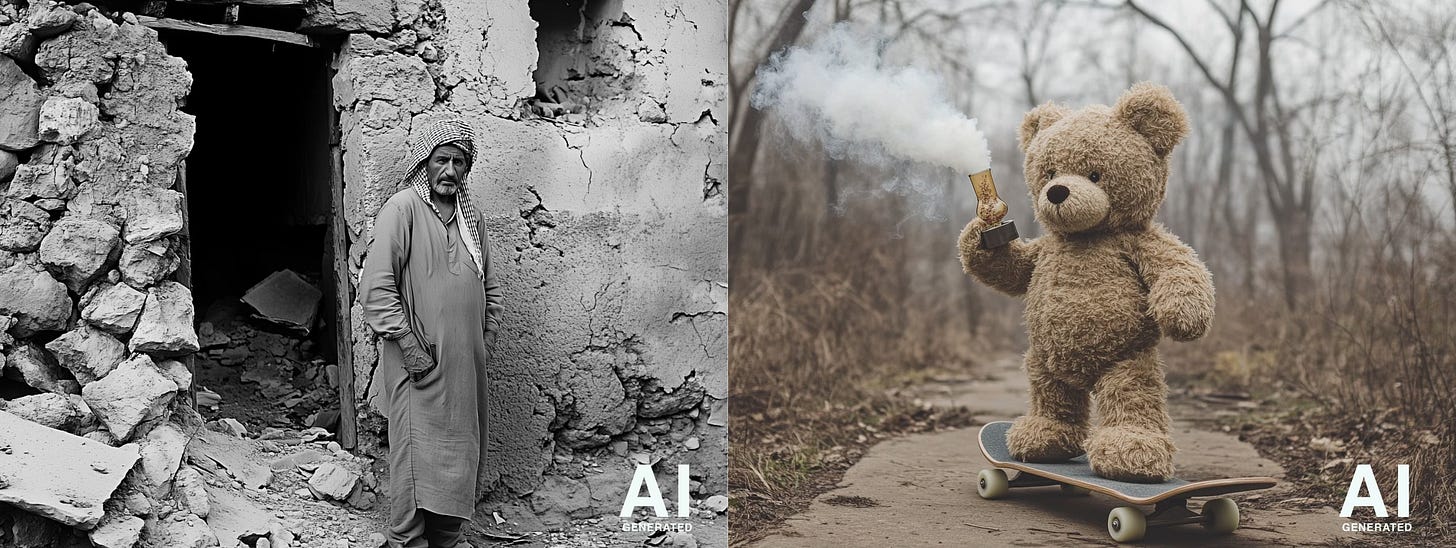

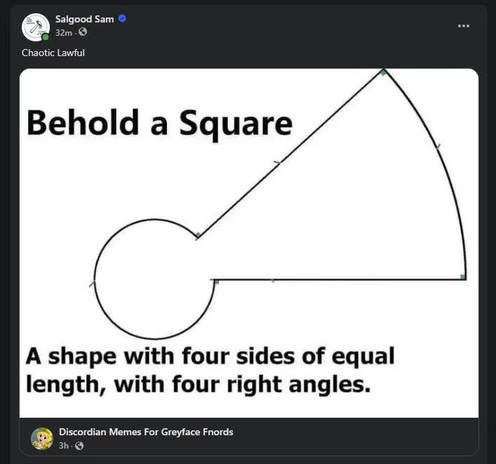
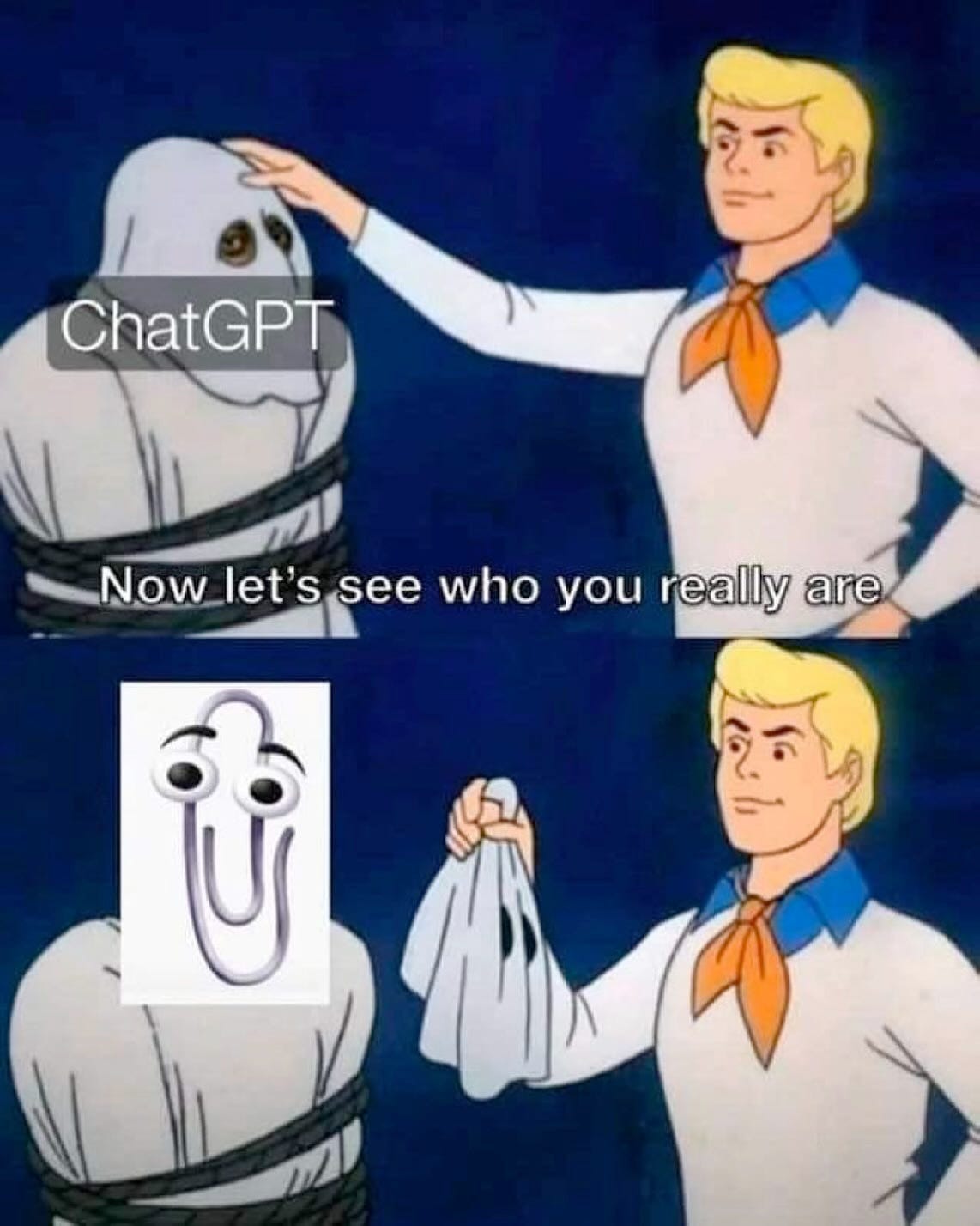
As promised here are the full answers Michael Howard from foto was kind enough to answer.
"Q. Do you see the AI contributors as a viable part of the paying supporting community?
A. I’m not sure yet. We are watching to see how Foto is used by everyone from all walks of life and seeing who supports Foto. Building a social media network centered around photography primarily, but images of other types are allowed starts by collecting data, observing, and then making adjustments. I don’t think there is a huge AI community on Foto. There are a few that I know of, but I do not think 50% of the Foto users are AI contributors. From what I can tell, it’s a tiny %.
Q. Is it possible that the AI image makers might eventually outnumber traditional photographers?
A. With how fast Adobe, Google, Apple, and Canvas are incorporating AI, it’s possible, but we don’t really know. No one knows. It’s all speculation. AI images could be just a fad like the NFT craze. To a certain degree, the market will sort itself out, but it will take time. I do think companies will start using AI more, and there isn’t much anyone can do about it. The genie is out of the bottle at this point, and billions are being poured into making AI better every year. It sucks, but that’s what is going on.
Q. Do you plan to allow the photographs posted in the feed to be used to train AI models?
A. No. We are not allowing photos posted to Foto to train AI. If we ever did something like that, it would be something every user would have to opt-in to and we’d need to pay contributors for allowing their photos to be used as training data. Perhaps this is a way photographers can make money and sustain themselves in the future, but again it’s too early to tell.
Can you protect the existing contributing photographers from having their content used in AI mashups?
Q. How might you clearly define original work from Images generated on the databases of other people’s work?
A. This is again something we are discussing, and we’ll talk about it in depth on the Foto podcast episodes about AI. There are some options available now, but we need to build a firm plan around them. We can do something with metadata and third-party software systems that are learning how to identify AI images.
Q. How do you plan to maintain the authenticity and artistic integrity of the community?
A. This ties into the question above. It will be done through metadata, third-party software systems, labeling images, and allowing Foto users to choose what they see. Current social media doesn’t give users control. We want to do the opposite and give users the ability to craft their own experience, but to do that, we need accurate labeling of images and accurate search. This will take years to perfect, if not decades.
Q. If ever you enable photographers to sell their work do you think original photography will be worth as much alongside fantastical AI images?
A. I don’t know. You are asking me to be a futurist and predict the consumer/art buyer market in the future. I can’t predict the future."
Michael also says he's going to record several podcasts with a few different people to discuss AI and the challenges it presents. That will most likely be available on https://fotoapp.substack.com
Enjoyed reading this one, I understand AI is here to stay in one for or another… I see it as a tool that helps facilitate how you might edit better in regards to photography. My hand is nowhere near steady enough to mask out to the enth degree when separating her from the background, but an AI tool could and it would get better overtime. I do not think AI should be used as a tool for generating images to make a story because it takes work away from the people who have trained long and hard to do this work.